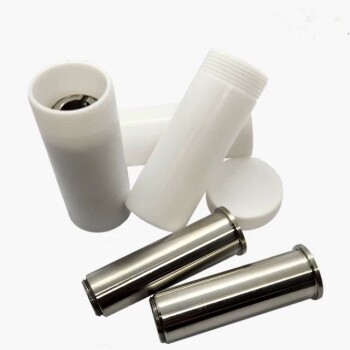Pyrolysis of tyres is a thermal decomposition process that breaks down the rubber into various by-products. The primary by-products include pyrolysis oil, carbon black, steel wire, and syn-gas. Pyrolysis oil, which constitutes 35-45% of the output, can be used as fuel or further refined for additional applications. Carbon black, making up 30-35% of the output, is utilized in manufacturing tires, rubber products, inks, and asphalt modifiers. Steel wire, accounting for 8-15%, is recycled for use in metal abrasives and other steel-based products. Syn-gas, also 8-15%, is a mixture of combustible gases used as an energy source. These by-products have significant industrial applications, making tyre pyrolysis an environmentally and economically beneficial process.
Key Points Explained:
-
Pyrolysis Oil (35-45% of output):
- Composition: A liquid product consisting of light and heavy oils and tar.
- Uses: Can be used directly as a fuel or further distilled to produce higher-value products.
- Industrial Applications: Used in the chemical industry and for power generation due to its high calorific value.
-
Carbon Black (30-35% of output):
- Composition: A fine black powder primarily composed of carbon.
- Uses: Widely used in the manufacturing of tires, rubber products, inks, and as an asphalt modifier.
- Industrial Applications: Enhances the durability and strength of rubber products and improves the quality of inks and coatings.
-
Steel Wire (8-15% of output):
- Composition: The steel reinforcement found in tyres.
- Uses: Recycled to manufacture metal abrasives and other basic steel materials.
- Industrial Applications: Utilized in construction, manufacturing, and other industries requiring steel components.
-
Syn-gas (8-15% of output):
- Composition: A mixture of non-condensable gases, primarily hydrogen, carbon monoxide, and methane.
- Uses: Can be used as a source of energy within the pyrolysis plant to generate heat for the process.
- Industrial Applications: Provides a sustainable energy source for various industrial processes, reducing reliance on fossil fuels.
-
Environmental and Economic Benefits:
- Waste Reduction: Converts waste tyres into valuable by-products, reducing landfill use and environmental pollution.
- Resource Recovery: Recovers useful materials like steel and carbon black, promoting recycling and resource efficiency.
- Energy Production: Generates energy-rich by-products like pyrolysis oil and syn-gas, contributing to energy sustainability.
In summary, the by-products of tyre pyrolysis—pyrolysis oil, carbon black, steel wire, and syn-gas—have diverse and valuable applications across various industries. This process not only helps in managing waste tyres but also contributes to resource recovery and energy production, making it a sustainable and economically viable solution.
Summary Table:
| By-Product | Composition | Uses | Industrial Applications |
|---|---|---|---|
| Pyrolysis Oil | Light and heavy oils, tar | Fuel, distillation for higher-value products | Chemical industry, power generation |
| Carbon Black | Fine black powder (carbon) | Tires, rubber products, inks, asphalt modifiers | Enhances rubber durability, improves ink and coating quality |
| Steel Wire | Steel reinforcement from tyres | Recycled for metal abrasives, steel-based products | Construction, manufacturing, steel components |
| Syn-gas | Hydrogen, carbon monoxide, methane | Energy source for pyrolysis plant | Sustainable energy for industrial processes, reduces fossil fuel reliance |
| Environmental & Economic Benefits | Waste reduction, resource recovery, energy production | Converts waste tyres into valuable by-products, promotes recycling, generates energy | Reduces landfill use, recovers resources, contributes to energy sustainability |
Interested in tyre pyrolysis solutions? Contact us today to learn more about sustainable waste management!








